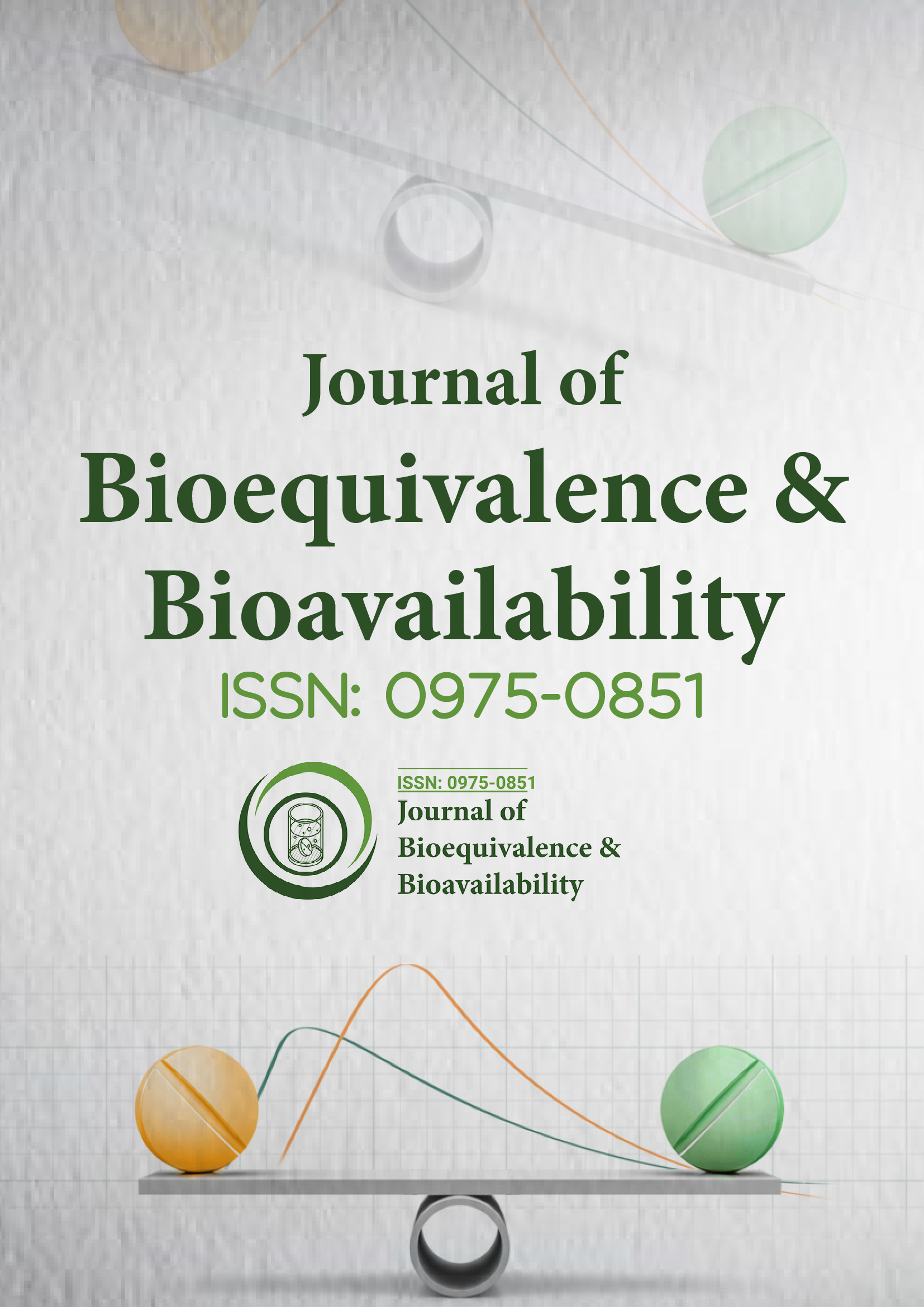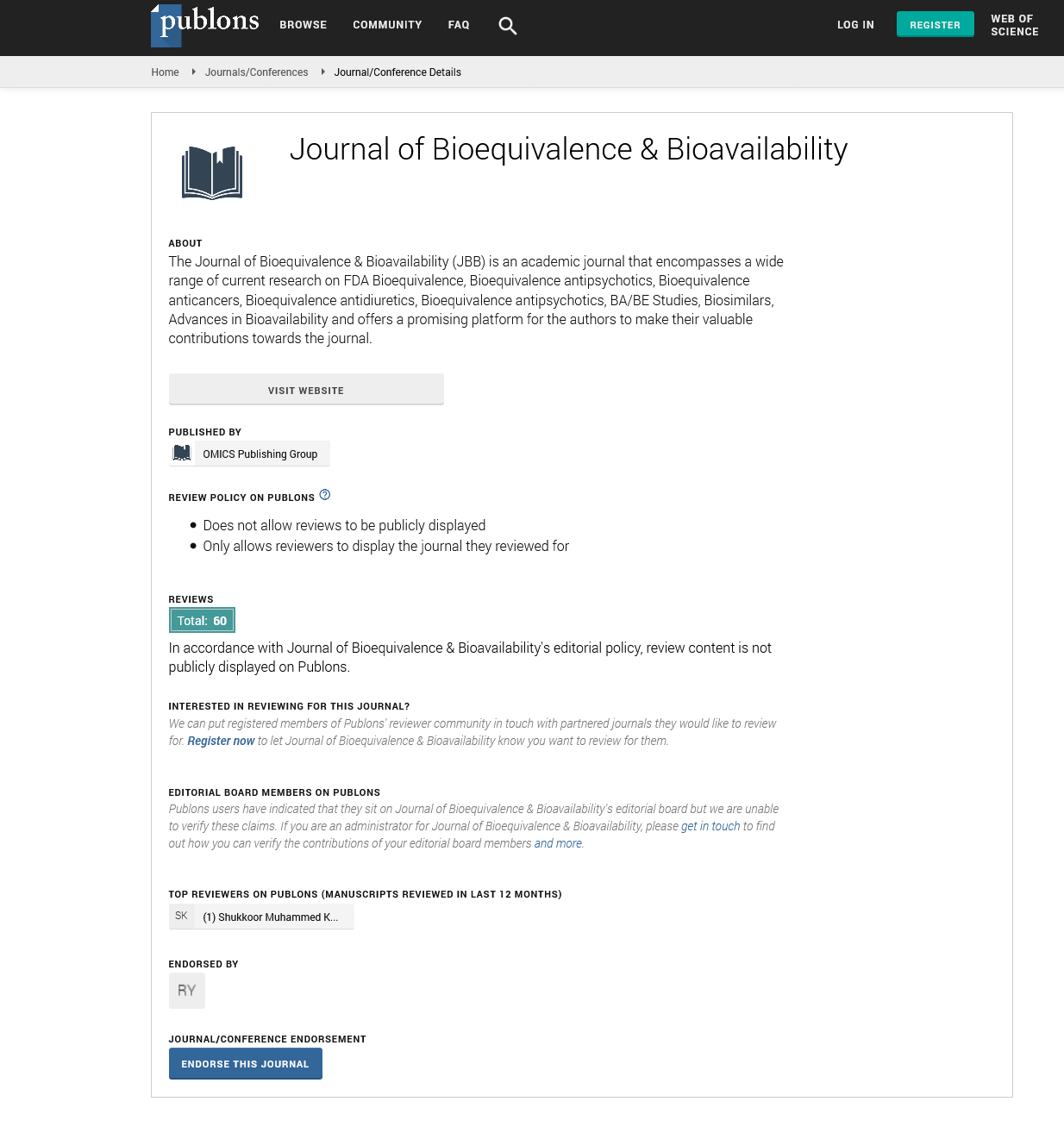Indexed In
- Academic Journals Database
- Open J Gate
- Genamics JournalSeek
- Academic Keys
- JournalTOCs
- China National Knowledge Infrastructure (CNKI)
- CiteFactor
- Scimago
- Ulrich's Periodicals Directory
- Electronic Journals Library
- RefSeek
- Hamdard University
- EBSCO A-Z
- OCLC- WorldCat
- SWB online catalog
- Virtual Library of Biology (vifabio)
- Publons
- MIAR
- University Grants Commission
- Geneva Foundation for Medical Education and Research
- Euro Pub
- Google Scholar
Useful Links
Share This Page
Journal Flyer

Open Access Journals
- Agri and Aquaculture
- Biochemistry
- Bioinformatics & Systems Biology
- Business & Management
- Chemistry
- Clinical Sciences
- Engineering
- Food & Nutrition
- General Science
- Genetics & Molecular Biology
- Immunology & Microbiology
- Medical Sciences
- Neuroscience & Psychology
- Nursing & Health Care
- Pharmaceutical Sciences
Bioequivalence of sarpogrelate 100-mg tablets in healthy Chinese subjects under fasted and fed conditions: A four-way replicate crossover study by a reference-scaled average bioequivalence approach
9th World Congress on Bioavailability and Bioequivalence
April 16-18, 2018 Dubai, UAE
Cuiyun Li and Yanhua Ding
The First Hospital of Jilin University, China
Posters & Accepted Abstracts: J Bioequiv Availab
Abstract:
The purpose of this study was to evaluate the bioequivalence (BE) of two Sarpogrelate formulations (100-mg tablets) by the reference-scaled average bioequivalence (RSABE) approach and to investigate the pharmacokinetic (PK) properties of Sarpogrelate in Chinese healthy subjects. This single-dose, open, randomized, four-way replicate study with a 3-day washout period was conducted in healthy Chinese male volunteers under fasted (n=38) and fed (n=34) conditions. Blood samples were collected over a 6 h period (fasted) and 10 h period (fed). Sarpogrelate concentrations were assayed using a liquid chromatography tandem mass spectrometry (LC-MS/MS) method. A non-compartmental method was used for calculation of PK parameters. The formulations in fasted and fed condition was assessed considering 90% confidence intervals (CIs) for the ratio of means for lnCmax and lnAUC within the BE limits based on RSABE method. Results showed that the 90% CIs for ratios of lnCmax, lnAUC0-t and lnAUC0-â?? for fasted study were 0.7322-1.0623, 0.7986-1.0727 and 0.8049-1.0648, respectively. For fed study, these data were 0.8918-1.1076, 0.9818-1.0694 and 0.9818-1.0686, respectively. All the 90% CIs were within the RSABE acceptance limits. The test and reference formulations of Sarpogrelate met the regulatory criteria for BE of the Chinese Food and Drug Administration. Food intake decreased the systemic exposure and Cmax to Sarpogrelate by 0.9-fold and 0.5-fold, respectively. lcy2442929@126.com

